#gavialidae
Text

Gharials (Gavialis gangeticus), male with babies, family Gavialidae, National Chambal Gharial Wildlife Sanctuary, India
CRITICALLY ENDANGERED.
photograph by Dhritiman Mukherjee
2K notes
·
View notes
Text
Gharial rescued from sea
Another instance of more recent croc news, a "giant" gharial was found in the Indian Ocean off the coast of Balsore, eastern India.
According to news articles, the animal, an adult Indian Gharial (Gavialis gangeticus), meassured around 13 feet or in metric close to 4 meters in length while weighing some 118 kilos.

The gharial apparently got caught in a fishing net and was found by fishermen, who promptly reported their catch to the Forest Department. The department then handed the animal over to Nandankanan Zoological Park, where the crocodilian still resides.
That's all the information given to us by the article, which you can read here, but there's two key notes I wanna touch upon.
The first is size. At 4 meters, this gharial was decently large for sure and as someone who has seen a (stuffed) female of slightly greater proportions I can attest that it must have been an impressive animal. However, I think its worth mentioning that Indian gharials are capable of growing even larger. The female I just mentioned is accompanied by a stuffed male nearly 5 and a half meters in length, with some reports claiming sizes even greater than that.
Me and the Vienna gharials

The second point is the mysterious presence of a gharial this far out at sea. This is simultaneously unusual yet also very much reasonable from the point of view of paleontology.
On the one hand, Indian gharials are critically endangered. Their range today is incrediply spotty and isolated and to my knowledge they aren't found anywhere near the coast these days.
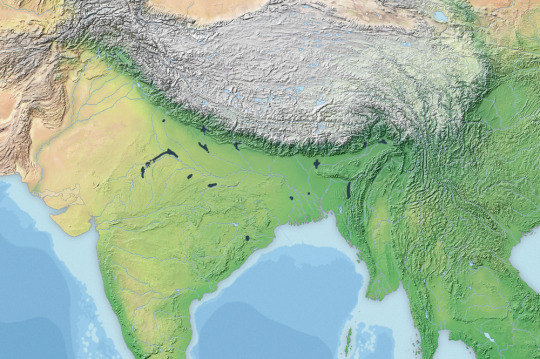

However when you look at how the range was meant to be like, then you see that they definitely reached the river deltas and coastal regions. So our image of gharials as this inland freshwater species is more based in circumstance than reality.
This becomes especially apparent once you begin to consider the paleobiogeography of gharials. Based on our current knowledge, gharials most likely originated somewhere in Eurasia or Africa, spreading from there across much of the eastern hemisphere and beyond (full disclosure I am not considering thoracosaurs to be gavialoids, more on that can of worms later maybe). Anywho, phylogenetic analysis and the fossil record both suggest that gharials then crossed oceans and settled South America sometime prior to or during the Miocene, where they diversified and gave rise to the gryposuchines. Some species even remained saltwater species, such as Piscogavialis, which lived in the coastal waters of Peru.
Although gryposuchines were once thought to be a distinct subfamily of gharial, recent research suggests that they were but an evolutionary stepping stone, with some South American form once again crossing the Pacific and settling down in Asia where the much more basal "tomistomines" or false gharials (a misnomer) still resided. And while the gryposuchines of South America went extinct, those that returned to Asia survived and eventually gave rise to the Indian Gharial of today.
Left: A cladogram showing the relationship between Gryposuchinae and modern gharials
Right: Piscogavialis swimming overhead some marine sloths of the genus Thalassocnus by @knuppitalism-with-ue


So ultimately, seeing a gharial in saltwater is much less bizarre than one would initially think, its just that habitat destruction and overhunting have largely pushed these gorgeous reptiles further inland and to the brink of extinction.
#gharial#indian gharial#gavialis gangeticus#gavialidae#news#croc#crocodilia#crocodile#india#herpetology#gavialinae#gryposuchinae#piscogavialis#some paleontology#palaeoblr
241 notes
·
View notes
Text
Uncharismatic Fact of the Day
No, that’s not a disfigured crocodile-- that’s a gharial! These crocodilians are named after their distinctive snouts, which resemble earthenware pots called ‘ghara’ made in their native India and Pakistan. Males use their growths to amplify mating calls underwater and to blow bubbles that attract females.
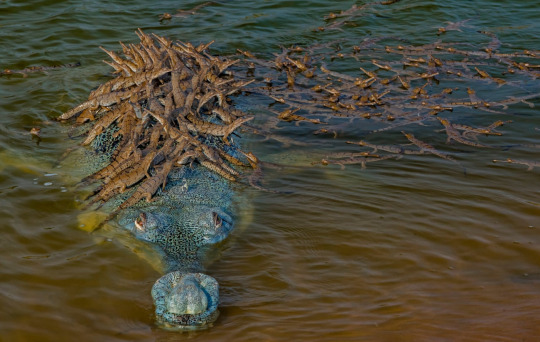
(Image: A proud gharial (Gavialis gangeticus) dad, by Dhritiman Mukherjee)
If you like what I do, consider buying me a ko-fi!
107 notes
·
View notes
Photo
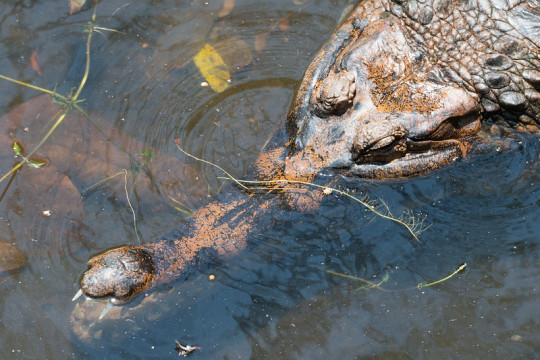
A False gharial (Tomistoma schlegelii) in Singapore Zoo
by Andrew Grimshaw
#false gharial#crocodilians#reptiles#tomistoma schlegelii#tomistoma#gavialidae#crocodilia#reptilia#chordata#Singapore zoo
24 notes
·
View notes
Text

Gharial Mom and her kids, India, photo by Santosh Jana
The gharial, also known as gavial or fish-eating crocodile, is a crocodilian in the family Gavialidae and among the longest of all living crocodilians.

5 notes
·
View notes
Photo

Miocene fossils from the southeastern Pacific shed light on the last radiation of marine crocodylians
Rodolfo Salas-Gismondi, Diana Ochoa, Stephane Jouve, Pedro E. Romero, Jorge Cardich, Alexander Perez, Thomas DeVries, Patrice Baby, Mario Urbina and Matthieu Carré
Abstract
The evolution of crocodylians as sea dwellers remains obscure because living representatives are basically freshwater inhabitants and fossil evidence lacks crucial aspects about crocodylian occupation of marine ecosystems.
New fossils from marine deposits of Peru reveal that crocodylians were habitual coastal residents of the southeastern Pacific (SEP) for approximately 14 million years within the Miocene (ca 19 to 5 Ma), an epoch including the highest global peak of marine crocodylian diversity.
The assemblage of the SEP comprised two long and slender-snouted (longirostrine) taxa of the Gavialidae: the giant Piscogavialis and a new early diverging species, Sacacosuchus cordovai. Although living gavialids (Gavialis and Tomistoma) are freshwater forms, this remarkable fossil record and a suite of evolutionary morphological analyses reveal that the whole evolution of marine crocodylians pertained to the gavialids and their stem relatives (Gavialoidea).
This adaptive radiation produced two longirostrine ecomorphs with dissimilar trophic roles in seawaters and involved multiple transmarine dispersals to South America and most landmasses. Marine gavialoids were shallow sea dwellers, and their Cenozoic diversification was influenced by the availability of coastal habitats. Soon after the richness peak of the Miocene, gavialoid crocodylians disappeared from the sea, probably as part of the marine megafauna extinction of the Pliocene.
Read the paper here:
https://royalsocietypublishing.org/doi/10.1098/rspb.2022.0380
#gavials#gharial#crocodylian#crocodilian#reptile#herpetology#prehistoric#animals#nature#south america#science#ocean#evolution#fossils
40 notes
·
View notes
Text
Gharial
The Gharial, also known as gavial or fish-eating crocodile, is a crocodilian in the family Gavialidae and among the longest of all living crocodilians. Mature females are 2.6–4.5 m (8 ft 6 in – 14 ft 9 in) long, and males 3–6 m (9 ft 10 in – 19 ft 8 in).
#gharial#gharial crocodile#crocodile#crocodiles#reptiles#animal#animals#animal fact#animal facts#fun animal fact#fun animal facts#fun fact#fun facts#fact#facts#zoology
18 notes
·
View notes
Text

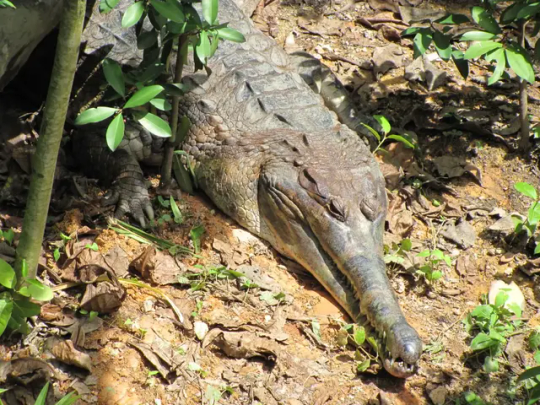




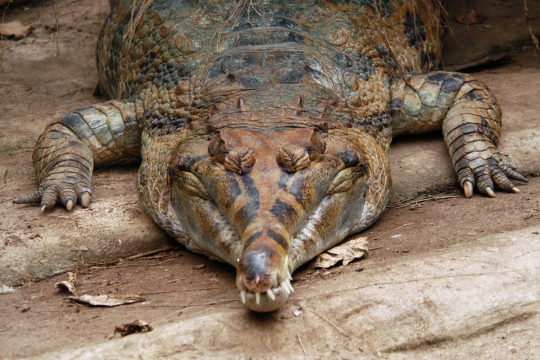
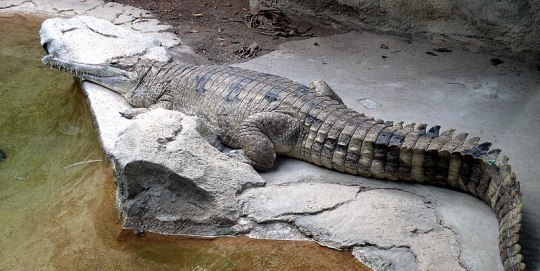
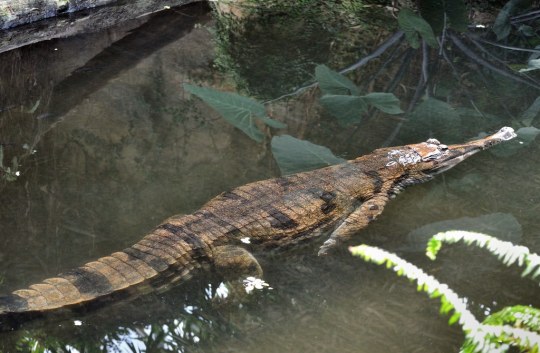
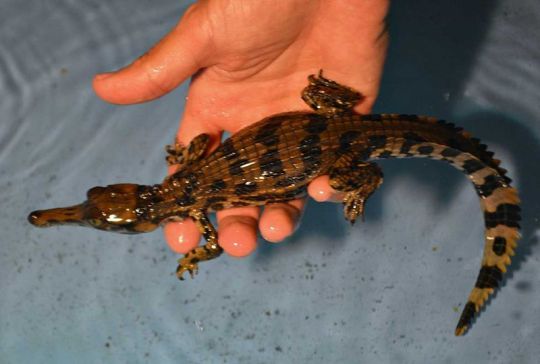
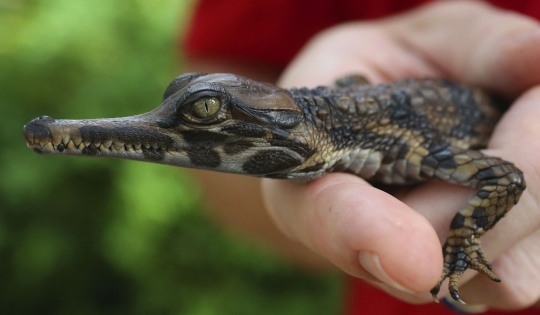
Tomistoma schlegelii, better known as the false gharial, Malayan gharial, Sunda gharial, or tomistoma is a species of large primarily freshwater crocodilian native to Malaysia, Sarawak, Indonesia, Borneo, Sumatra and Java. Despite its common name of false gharial the tomistoma is a member of the family Gavialidae, of which the tomistoma and the Indian gharial are the only two living members, meaning that the false gharial is very much a true gharial. Tomistoma tend to inhabit rivers, lakes, and swamps, where they feed upon fish, crustaceans, amphibians, monkeys, deer, water birds, otters, various reptiles, wild dogs, pigs, and even the rare cow. Tomistoma are themselves occasionally preyed upon by large crocodiles, tigers, leopards, and packs of wild dogs. Female tomistoma reach around 10 to 13ft (3.05 to 4m) in length and 205 to 460lbs (93 to 210kgs) in weight while males reach around 12 to 16ft (3.6 to 5m) in length and 420 to 1,300lbs (190 to 600kgs) in weight. They sport the largest skull in comparison to body length of any extant crocodilian, in large part do to there long, thin, smooth, and unordamented snout. Tomistoma are typically a dark reddish-brown coloration above with dark brown or black spots and cross-bands on the back and tail. With a grayish white mottled underbelly. Juveniles are mottled with black on the sides of the jaws, body, and tail. Breeding occurs twice a year in accordance with the wet seasons, from November to February and from April to June. After breeding females will build a nesting mound out of sand, peat, moss, twigs, and leaves typically near the water in the shade of a large tree. Here she will lay 20 to 60 eggs which will incubate for 90 to 100 days. Although mother tomistoma may sit on or near there mounds and guard them, unlike other crocodilians they offer no parental care once the young have hatched. Under ideal conditions a tomistoma will reach sexual maturity at around 20 years of age and may live up to 80.
#pleistocene pride#pleistocene#pliestocene pride#pliestocene#cenozoic#ice age#stone age#crocodilian#false gharial#gharial#tomistoma#malayan gharial#sunda gharial
1 note
·
View note
Text
crocodiles


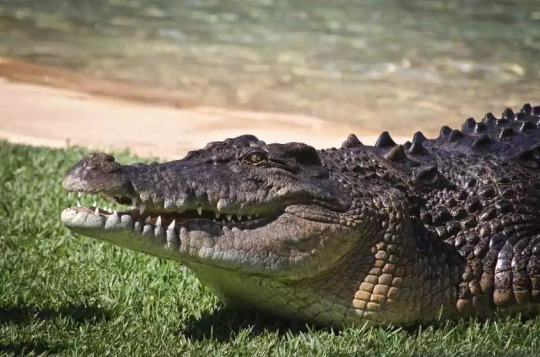


Crocodiles are a large semiaquatic lizard that live in the rivers and seas of Africa, America, Asia and Australia. The term crocodile is sometimes used even more loosely to include all extant members of the order Crocodilia, which includes the alligators and caimans (family Alligatoridae), the gharial and false gharial (family Gavialidae) among other extinct taxa. Like dragon I'm taking the scales and the appearance that the crocodile have as I like the idea that some of the armour pieces on my character seem scaled and more protected in areas such as the legs and arms which would make my character pop in my onion
1 note
·
View note
Text
Learn About The Crocodile Fossils And Its Quick Facts
Crocodiles (family Crocodylidae) are enormous semi-oceanic reptiles that live in the jungles of Africa, Asia, the Americas, and Australia. The expression crocodile is sometimes used to allude to all living individuals from the Crocodilia, including wiped-out taxa like the gharial and bogus gharial (family Gavialidae), gators, and caimans (family Alligatoridae).Read More:https://www.biztobiz.org/articles/learn-about-the-crocodile-fossils-and-its-quick-facts
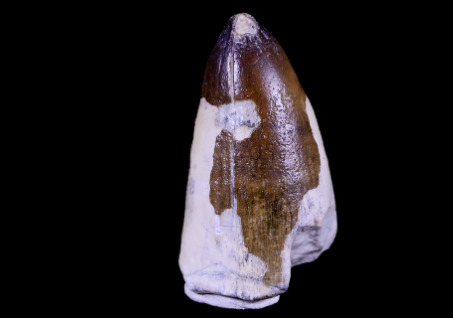
0 notes
Text

False Gharial aka Malayan Gharial (Tomistoma schlegelii), family Gavialidae, found in Malaysia, Singapore, and Indonesia
Historically, there has been some disagreement about how this species should be placed. At one time, some herpetologists believed this species should be placed in the crocodile family, Crocodylidae. There is vast agreement now that they should be placed in the Gharial family, Gavialidae.
photograph by Junkyardsparkle
306 notes
·
View notes
Text
Facts About Crocodiles
There are 24 recognised species of extant crocodilians, divided into three Families - Alligatoridae (8 species; alligators and caimans), Crocodylidae (14 species; “true” crocodiles) and Gavialidae (2 species; Gharial and Tomistoma).
Crocodile attacks on humans are common in places where large crocodilians are native and human populations live. It has been estimated that about 1,000 people are killed by crocodilians each year.
Crocodiles actually eat without chewing. Their jaw operates in such a way that it cannot move sideways, therefore they can’t grind down on food in a traditional chewing motion. They will then swallow stones to help them digest and break down the food inside their stomach.
1 note
·
View note
Text
What are Crocodilians
Crocodilia (or Crocodilia, both /krɒkədɪliə/) is an order consisting primarily of large carnivorous semi-aquatic reptiles known as crocodiles. They first appeared in the late Cretaceous period (Cenomanian period) 95 million years ago and are the closest living relatives of birds, as these two groups are the only known archosaur survivors. Members of the general group of this order, the pseudococcoid clade, arose about 250 million years ago in the early Triassic period and diversified during the Mesozoic period. The order Crocodilians includes true crocodiles (family Crocodylidae), alligators and caimans (family Alligatoridae), and crocodilians and false crocodiles (family Gavialidae). Alligator is a less ambiguous linguistic term for members of this group, although the term "crocodile" is sometimes used to refer to all these animals.
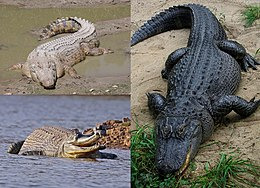
1 note
·
View note
Text
False gharial

The false gharial, also known by the names Malayan gharial, Sunda gharial and tomistoma is a freshwater crocodilian of the family Gavialidae native to Peninsular Malaysia, Borneo, Sumatra and Java.
0 notes
Photo
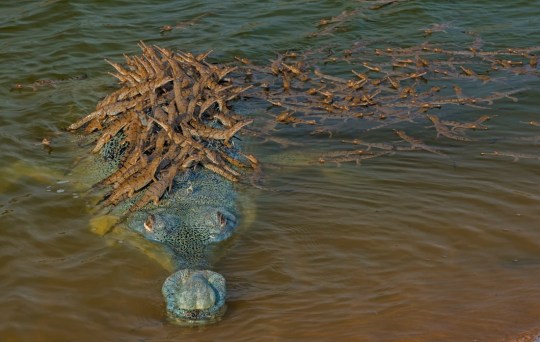
GHARIAL WITH BABIES ON BOARD*
Gavialis gangeticus
©Dhritiman Mukherjee
Gharials were once the most common crocodilians in the open river systems of South Asia, with as many as 40,000 or more adult gharials living in the rivers of India, Nepal, Pakistan, Bhutan, and Myanmar before the arrival of European hunters. Declines accelerated in the 1850s, with the construction of canals and other structures. By the early 1940s, gharial numbers had fallen to an estimated 10,000.
The gharial is now limited to 14 populations, with just five of these actively reproducing. Most groups contain fewer than 50 individuals of breeding age (10 to 15 years old for females, 20 to 25 for males). Today, there are just 650 to 700 mature gharials, living only in India and Nepal.
Gharials survive in the Chambal River area as, according to ancient Indian legend, thousands of cows were once slaughtered along the banks of the Chambal, causing the river to run red with blood. Because of this, the Chambal has long been considered unholy. That belief has deterred development along the river and left the ecosystem here relatively pristine. Since 1979, more than two-thirds of the river has been designated a sanctuary to protect South Asian river dolphins (Platanista gangetica), red-crowned roofed turtles (Batagur kachuga), gharials, and other wildlife that nest along its wide, sandy banks.
*Crocodylians - including alligators, crocodiles, tomistomas, gharials, etc are the only reptiles to exhibit “substantial parental care” of their young
Other posts you might like:
IDing various Crocodylians
Indian Gharial
#gharial#babies on board#gavialis gangeticus#©dhritiman mukherjee#babies#earthtouchnews.com#bioGraphic#california academy of sciences#south asia#india#nepal#population in decline#chambal#crocodilians#gavialidae#reptilia
142 notes
·
View notes
Text

The Gharial, also known as Gavial, is a crocodilian in the family Gavialidae and among the longest of all living crocodilians.
The Gharial (Gavialis gangeticus) is distinguished by its elongated, slender snout with many sharp, interlocking teeth lining its long jaws. Adult males develop a bulbous growth at the tip of their snout, called a "ghara" after the Indian pot it resembles. The ghara partially covers the gharial's nostrils and acts as a vocal resonator. Male gharials can reach 16 - 20 feet (5 - 6 m) in length while females can grow to lengths of 11.5 - 15 feet (3.5 - 4.5 m). Adult gharials mainly eat fish and small crustaceans, while juveniles also feed on insects, tadpoles and frogs. They are well adapted to capturing fish underwater due to their interlocking sharp teeth and their uniquely shaped snout. Sadly, gharials have been listed as Critically Endangered on the IUCN Red List since 2007 and in the 1970s, this species came alarmingly close to extinction.
📷 Unknown (please comment if you do)
26 notes
·
View notes